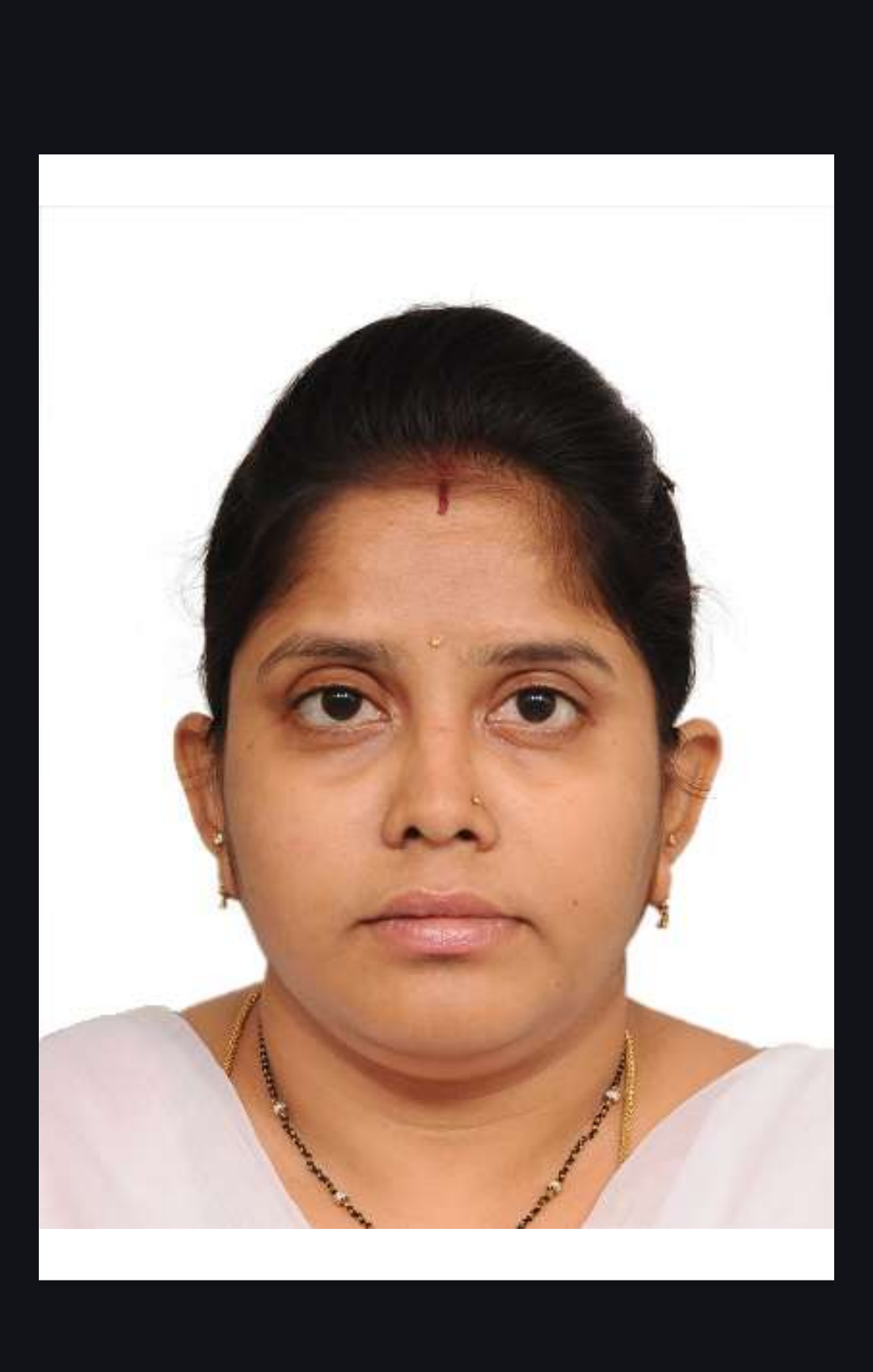Abstract
The most frequent cause of fatalities or severe brain damage brought on by child abuse is shaken baby syndrome. It is peculiar to infancy, when children have distinct physical characteristics. Blood clots in the retina and subdural spaces are indicators of shaking injury. In 1974, American radiologist John Caffey came up with the term "whiplash shaken infant syndrome." However, Guthkelch, a British neurosurgeon, was the first to identify shaking as the reason why baby subdural hemorrhage. Later, it was believed that impact was a key factor in brain damage. Recent advancements in neuropathology and imaging methods have established that hypoxia ischemic encephalopathy is the source of brain damage. For confirming a shaking injury, diffusion weighted magnetic resonance imaging is the most precise and sensitive technique. Social welfare organizations should conduct in-depth investigations into the families of children who have subdural hemorrhages.
Keywords
Shaken Baby Syndrome, severe brain damage
Introduction
In 1860, Tardieu noted that children in Paris who had experienced child maltreatment had thicker blood on the surface of their brains.[1] A pediatric physician named John Caffey documented lengthy bone fractures in six newborns with subdural hemorrhages in 1946[2]. There was no history of harm, and the cause was still unknown. Such a situation might seem unbelievable now, but at the time, child abuse was not widely acknowledged as a phenomenon. After Kempe et al. brought attention to the predicament of abused children in their seminal work in 1962, this changed.[3] Neurosurgeon Guthkelch postulated that shaking was the source of the brain damage and described subdural hemorrhage as a characteristic of "battered child syndrome" in 1971.[4] According to his writing, the infant is more susceptible to whiplash injuries because of their "relatively large head and puny neck muscles." Guthkelch added that British parents believed that a "good shaking" was less harmful and more socially acceptable than a strike to the head or elsewhere. The frequency of newborn shakes in Britain is hard to estimate. Nonetheless, it is possible to determine the prevalence of those who suffer severe injuries. According to two recent British surveys, there were 21.0 and 24.6 instances of inflicted subdural hemorrhage per 100,000 children under one year old annually[.5–6] The majority of the kids were younger than six months. When children weep uncontrollably for an extended period of time, they are typically shaken. The child may also be flung to the ground in a fit of wrath. The offender typically lacks the patience and expertise necessary to deal with a child. Some have acknowledged that shaking is a tactic used to stop a youngster from crying.[7] Most often, these people are men who work as babysitters, boyfriends, and fathers[.8–9]
PATHOPHYSIOLOGY:

For a head injury, rotational or translational forces are required. Linear movement of the brain is the result of translational forces. These forces, which are typically quite benign, happen during falls and can, at worst, result in a fractured skull. During shaking, the brain rotates on its central axis or at the connection to the brainstem due to rotational forces. As the brain moves around in the subdural region, the bridging veins that run from the cortex to the dural venous sinus stretch and tear. It is not dangerous in and of itself for blood to leak into the subdural area, usually between 2- and 15-ml.[7] It offers convincing proof of shaking even when there is no prior history of severe unintentional head trauma. In the past, diffuse axonal injury or axonal shearing have been used to characterize the traumatic axonal damage that results from a newborn being vigorously shaken[7,10] Most infants with shaking injuries exhibit some indication of impact, whether it is pathological, radiological, or clinical. Eleven Additionally, it was determined by experimental data in both dolls and primates that shaking alone would not be enough to produce diffuse axonal injury in babies. [12,14] Some people believe that the term "whiplash shaken infant syndrome," which was first used by Caffey, is not a suitable way to describe the mechanism of harm because of these factors.[15] They would consider the term "shaking impact syndrome" to be more appropriate given the manner in which the harm occurs. Eleven[16]
The most accurate indicator of axonal damage, ?-amyloid precursor protein, has yielded fresh data in the last ten years. The distinction between traumatic and hypoxic axonal damage may now be made.[17] A medically significant finding is that the presence of ?-amyloid precursor protein indicates survival of at least two to three hours. Imaging techniques have improved over the past ten years in tandem with advancements in neuropathology, making it possible to distinguish between traumatic and hypoxic brain damage.[18,19] These developments have demonstrated that hypoxia is the primary cause of the early brain damage that occurs with intense shaking.[17] This leads to increased intracranial pressure and cerebral oedema.[20]Ischemia brought on by a drop in cerebral perfusion pressure causes additional neurological damage or even death. The difference in consequence effectively illustrates the distinction between shaking (hypoxic) and unintentional (traumatic) injuries. [21,22] The significance of impact is rendered moot in light of the recent discovery that shaking is essentially a hypoxic ischemic injury. The series of events leading to brain damage is depicted in Figure 1. Breathing problems are the primary cause of the hypoxia. Babies that have been shaken frequently experience apnea and respiratory issues.[23, 24 ]These newborns' necropsies show brainstem injury. This injury is specific to infants, who have large heads and weak neck muscles. A stretch injury at the craniocervical junction results from the crucial movement of the head during shaking.[25,26] The risk of harm increases with the infant's age. Vigorous physical treatment without head support can cause shaking injury in extremely premature newborns that results in histological brain abnormalities that are identical to those seen in older infants. [27,28] Infants have a different pattern of injury than older children because their unmyelinated brain is delicate and their baseof the skull is smooth. Seldom seen are contusions, which are superficial foci of hemorrhagic necrosis that typically affect the base of the brain and the regions beneath skull fractures. Infants have a different pattern of injury than older children because their unmyelinated brain is delicate and their base of the skull is smooth. Seldom seen are contusions, which are superficial foci of hemorrhagic necrosis that typically affect the base of the brain and the regions beneath skull fractures. Additionally, subarachnoid hemorrhages in infants are common, and similar to subdural.

CLINICAL SINGS:
A broad range of clinical symptoms are present. Eleven[29]. A youngster who is shocked, unconscious, and convulsing is the most severe; the mildest are non-specific, meaning that harm may never be seen. The child will always be visibly ill just after the occurrence, even for the least seasoned caregiver. Poor feeding, nausea, fatigue, and irritability are the non-specific symptoms that might last for days or weeks. Physicians tend to minimize these symptoms, which can be ascribed to colic, feeding issues, or viral Illness[30]. Only when the child sustains another injury or exhibits a chronic subdural hemorrhage (head enlargement) can the symptoms of a previous injury be identified. It's probable that some kids who exhibit vague symptoms and undiagnosed brain damage may eventually exhibit learning challenges and academic failure. It is crucial to remember that, in contrast to an extradural hemorrhage, there is no discernible time between the trauma and unconsciousness in cases of severe injury.[11,31,33] The child may be opisthotonic at presentation, with a complete or enlarged fontanelle. Common symptoms include shock, pallor, and hypothermia. Intubation and ventilation are required for cyanosis, apnea, and irregular breathing. Skeletal and ocular damage are common in children who have been shaken.
EYE INJURIES :
Retinal hemorrhage is the hallmark ocular indication of a head injury, though it can also infrequently happen in serious accidents. Both unilateral and bilateral hemorrhages support the diagnosis of tissue damage.[34] There haven't been any reports of eye hemorrhage without subdural hemorrhage, most likely because subdural hemorrhage requires less effort.[35] The degree of eye hemorrhage is correlated with the severity of head trauma[.35]Intrareticular and sub hyaloid hemorrhage occur initially, followed by retinal detachment, choroidal hemorrhage, and vitreous hemorrhage[.35] The most common type of hemorrhage, known as ora serrata, is difficult to see. The majority of hemorrhages occur at the posterior pole and may affect one or more retinal layers.[34–36] It's unclear what causes retinal hemorrhage. One explanation is that traction injury occurs where the vitreous is most securely linked to the retina due to to-and-fro oscillation of the lens and vitreous; the other is that hemorrhage results from back pressure on the central retinal vein brought on by elevated intrathoracic or intracranial pressure.[36] Neonatal hemorrhage is frequent and could cause confusion. Such hemorrhage might last up to three months, however it normally goes away after eight days.[34] Retinal hemorrhage cannot be dated based just on appearance. However, the presence of hemosiderin at necropsy suggests that the hemorrhage is older than three days.[34] Retinal hemorrhage is not caused by coughing or vomiting, with the possible exception of whooping cough. Convulsions and cardiac resuscitation don't either.[37,38] Vasculopathies, cranial abnormalities, and coagulation and hematological disorders are non-traumatic causes of retinal hemorrhage. Meningitis, intracranial hypertension, and a few uncommon metabolic diseases can also be the cause of them.[34,36,39] It should be mentioned that coagulation abnormalities might result from head injuries alone.[40] Damage to the skeleton Caffey described children with subdural hemorrhages and bone damage.[2,15,41].
Radionuclide scanning can identify recent rib fractures, which may not be visible on radiography right away. When rib fractures are highly suspected without a radionuclide scan, chest radiography should be performed again[10–14] Days later, when callus formation will be visible[42] A lot of infants receive cardiopulmonary resuscitation from paramedics or emergency personnel.[42,43].

MANAGEMENT, INVESTIGATIONS AND DIAGNOSIS:
Injury should always be heavily considered when dealing with a very unwell infant who is unresponsive and has no apparent cause. A skeletal survey and a careful evaluation for signs of injury should be performed. The acute care is the same as it would be for any sick youngster who needs breathing assistance. To protect other children in the family, social services should be notified right away. To make the forensic investigation easier, the police must get involved early. A variety of hospital professionals and other organizations may be involved in the child's ongoing care. Every document should be meticulously filled out and saved for potential use in court. Take pictures of any injuries. Health visitor and patient records should be closely examined in the case of a child who has a chronic subdural hemorrhage. It has been demonstrated that prior head circumference measurements are essential for determining when the head trauma occurred.[44 ,45] A radiograph of the skull could show indications of impact. Fractures cannot be dated since they mend without callus. Computed tomography without contrast is the preferred first test for identifying a subdural hemorrhage, according to the American Academy of Pediatrics [29] When it comes to detecting acute hemorrhage, it is superior to magnetic resonance imaging (MRI). Whenever feasible, MRI should be performed two to three days after computed tomography. MRI can be utilized to determine the age of hemorrhages in cases of repetitive injury and is more effective in defining intraparenchymal damage[46] The diagnosis of shaken baby syndrome has recently come to rely heavily on diffusion weighted imaging[18,19]Within minutes after start, cerebral ischemia is evident, and it can differentiate between acute and chronic infarction. Prior to those seen on traditional MRI or computed tomography, the alterations are noticeable. In order to detect shaken baby syndrome, it is currently the most accurate and precise method.[19]This is why some people believe that an MRI using diffusion weighted sequences ought to be performed concurrently with the initial computed tomography.[19]
DIFFERENT DIAGNOSIS:
In total, 95% of newborns who suffer a severe intracranial damage have experienced shaking.[47]The majority of the rest are brought on by serious head injuries, such as those sustained in auto accidents. The same conditions that have been identified as generating retinal hemorrhage can induce subdural hemorrhages. About 20% to 30% of newborns who are asymptomatic have minor subdural and subarachnoid hemorrhages that go away quickly on their own[.7]. Rarely, birth trauma results in chronic subdural hemorrhage.[48] Due to the challenge of acquiring a trustworthy history, it is uncertain how frequently this occurs.[45] Small quantities of venous bleeding into an expanded subdural space might result in chronic subdural hemorrhages. This occurs in cases of brain atrophy, such as glutaric aciduria type 1.[49], a rare metabolic condition. [50] It is believed that the bridging veins in this condition strain due to the larger subdural area, rupturing in reaction to even minor stress. The dura then produces granulation tissue ingrowth, which creates a vascular membrane with delicate capillaries. The hematoma is either kept the same size or enlarged by capillary microhemorrhages.[51]. In addition, to ventricular shunts and children with glutaric aciduria type 1, chronic subdural hemorrhages should be considered caused. Frontotemporal atrophy and a widening of the Sylvian fissure are visible on brain imaging in glutaric aciduria type 1. The diagnosis can be confirmed by a biochemical screen, and tissue fibroblasts' lack of glutaryl-CoA dehydrogenase activity serves as confirmation.[49,50]Infants with macrocephaly and benign expansion of the subarachnoid spaces may be susceptible to subdural hemorrhage following modest trauma, according to certain theories.[52] This comes after children with this benign ailment were reported to have subdural effusions in the literature. Given that subdural hemorrhage is uncommon in neonates and substantial sub-arachnoid gaps are widespread, there is no scientific evidence to support that theory.[53] Subdural hemorrhage has been associated with brain shrinkage, which results from cellular water loss in hypernatremia. According to a thorough examination, hypernatremia is not the cause of subdural hemorrhage but rather the result of brain damage that occurs alongside it.[54] It is now commonly known that intentional injuries have worse outcomes (morbidity and mortality) than unintentional head injuries[.21,22] The fatality rate in the largest case study of head injuries was 13%.[21] Most people who have survived a head injury have some kind of neurological or cognitive impairment, which might not be completely noticeable until they are six years old.5. [22,24,33,55,56] The pattern and severity of the cerebral infarction brought on by the hypoxic insult are similar to the neurological outcome.[18,19] One such instance is occipital lobe involvement, which explains why blindness following injury is so common. Head circumference measures show a shifting brain growth as early as two months after the occurrence, indicating the prevalence of microcephaly.[19]. The anticipated outcome during the acute phase can be predicted using diffuse hypodensity on computed tomography or ischemic alterations on diffusion weighted MRI.[11,18,19] Young age, length of unconsciousness, and low Glasgow coma scale are all factors that are highly associated with bad outcomes.[22] "Hark ye, good parents, to put it plainly, when you are shaking your baby, you could be bruising his brain," Caffey41 wrote in 1972 in response to the preventative issue. Therefore, never, ever shake your toddler to save his limbs, brain, or even life. A controlled trial demonstrating the efficacy of a preventative program has never been conducted. [57]. An effective preventative program would need to target both men and women due to the large prevalence of male offenders[8,9]Implementing such a task would be challenging, and the educational system might be the best option.
CONCLUSION:
A strong whiplash shake starts the chain of events that leads to shaken baby syndrome. Stretch injury to the neuraxins is caused by cervical hyperextension. This results in apnea or trouble breathing. The resultant shock and hypoxia lead to hypoxic ischemic brain damage. Cerebral edema, intracranial hypertension, and a decrease in cerebral perfusion pressure all contribute to additional brain injury. The prognosis for inflicted harm is significantly poorer than that of traumatic injury in infancy. Retinal hemorrhage and subdural hemorrhage are significant indicators of shaking injury. Diffusion weighted MRI is the most rapid, sensitive, and targeted technique for identifying a shaking damage. This should, whenever feasible, be done in tandem with the first calculated tomogram.
REFERENCES
- Tardieu A. Etude médico-lègale sur les services et mauvais traitements exerces sur des enfants. Ann Hyg Publised Leg 1860;13:361–98.
- Caffey J. Multiple fractures in the long bones of infants suffering from subdural hematoma. AJR A JRoentgenol 1946;56:163–73.
- Kempe CH, Silverman FN, Steele BF, et al. The battered-child syndrome. JAMA 1962;181:17–24.
- Guthkelch AN. Infantile subdural haematoma and its relationship to whiplash injuries. BMJ 1971;ii:430–1.
- Jayawant S, Rawlinson A, Gibbon F, et al. Subdural haemorrhages in infants: population based study. BMJ1998;317:1558–61.
- Barlow K, Minns RA. Annual incidence of shaken impact syndrome in young children. Lancet 2000;356:1571–2. Doi : 10.1016/s0140-6736[00]031305.
- Case M, Graham MA, Handy TC, et al. Position paper on fatal abusive head injuries in infants and youngchildren. Am J Forensic Med Pathol 2001;22:112–22.
- Starling SP, Holden JR, Jenny C. Abusive head trauma: the relationship of perpetrators to their victims.Pediatrics 1995;95:259–62.
- Starling SP, Holden JR. Perpetrators of abusive head trauma: a comparison of two geographic populations.South Med 2000;93:463–5.
- Geddes JF, Whitwell HL, Graham DI. Traumatic axonal injury: practical issues for diagnosis in medicolegalcases. Neuropathol Appl Neurobiol 2000;26:105–16. Doi : 10.1046/j.1365- 2990.2000.026002105.x.
- Duhaime A, Christian CW, Rorke LB, et al. Nonaccidental head injury in infants—the “shaken-baby syndrome”. N Engl J Med 1998;338:1822–9. Doi : 10.1056/NEJM199806183382507.
- Gennarelli TA, Thibault LE, Adams JH, et al. Diffuse axonal injury and traumatic coma in the primate. AnnNeurol 1982;12:564–74. Doi : 10.1002/ana.410120611.
- Duhaime A, Gennarelli TA, Thibault LE, et al. The shaken baby syndrome. A clinical, pathological and biomechanical study. J Neurosurg 1987;66:409–15. Doi : 10.3171/jns.1987.66.3.0409
- Hanigan WC, Peterson RA, Njus G. Tin ear syndrome: rotational acceleration in pediatric head injuries.Pediatrics 1987;80:618–21.
- Caffey J. The whiplash shaken infant syndrome: manual shaking by the extremities with whiplash-induced intracranial and intraocular bleedings, linked with residual permanent brain damage and mental retardation.Pediatrics 1974;54:396–403.
- Bruce DA, Zimmerman RA. Shaken impact syndrome. Pediatr Ann 1989;18:482–4. doi : 10.3928/0090-4481-19890801-07.
- Geddes JF, Hackshaw GH, Vowles CD, et al. Neuropathology of inflicted head injury in children. Brain2001;124:1290–8. doi :10.1093\brain\124.7.1290
- Suh DY, Davis PC, Hopkins KL, et al. Nonaccidental pediatric head injury: diffusion- weighted imaging findings. Neurosurgery 2001;49:309–20. doi : 10.1016/00006123- 2001080000-00011.
- Biousse V, Suh DY, Newman NJ, et al. Diffusion-weighted magnetic resonance imaging in shaken baby syndrome. Am J Ophthalmol 2002;133:249–55. doi :10.1016\s0002- 9394[01]01366-6.
- Barlow KM, Minns RA. The relation between intracranial pressure and outcome in non- accidental head injury. Dev Med Child Neurol 1999;41:220–5. doi : 10.1017/s0012162299000481.
- Reece RM, Sege R. Childhood head injuries. Arch Pediatr Adolesc Med 2000;154:11–5.
- Prasad MR, Ewing-Cobbs L, Swank PR, et al. Predictors of outcome following traumatic brain injury in youngchildren. Pediatr Neurosurg 2002;36:64–74. doi : 10.1159/000048355.
- Johnson DL, Boal D, Baule R. Role of apnea in nonaccidental head injury. Pediatr Neurosurg 1995;23:305–10. doi : 10.1159/000120976.
- Haviland J, Russell RIR. Outcome after severe non-accidental head injury. Arch Dis Child 1997;77:504–7. doi : 10.1136/adc.77.6.504.
- Shannon P, Smith CR, Deck J, et al. Axonal injury and the neuropathology of shaken baby syndrome. ActaNeuropathol (Berl) 1998;95:625–31.doi : 10.1007/s0004010050849.
- Geddes JF, Vowles GH, Hackshaw AK, et al. Neuropathology of inflicted head injury in children II. Microscopic brain injury in infants. Brain 2001;124:1299–306. doi : 10.1093/brain/124.7.1299.
- Williams AN, Sunderland R. Neonatal shaken baby syndrome: an aetiological view from Down Under. ArchDis Child Fetal Neonatal Ed 2002;86:F29–F30.doi : 10.1136/fn.87.1.F29.
- Knight DB, Bevan CJ, Harding JE, et al. Chest physiotherapy and porencephalic lesions in very preterm infants. J Paediatr Child Health ;37:554–8. doi : 10.1046/J.1440- 1754.2001.00706.x.
- American Academy of Pediatrics, Committee on Child Abuse and Neglect. Shaken baby syndrome: rotationalcranial injuries. Technical report. Pediatrics 2001;108:206–10.
- Jenny C, Hymel KP, Ritzen A, et al. Analysis of missed cases of abusive head trauma. JAMA 1999;281:621–6. doi : 10.1001/jama.281.7.621
- Gilliland MGF. Interval duration between injury and severe symptoms in nonaccidental head trauma in infants and young children. J Forensic Sci 1998;43:723–5.
- Willman KY, Bank DE, Senac M, et al. Restricting the time of injury in fatal inflicted head injuries. Child AbuseNegl 1997;21:929–40. doi : 10.1016/s0145-2134[97]00054-9.
- Gilles EE, Nelson MD. Cerebral complications of nonaccidental head injury in childhood. Pediatr Neurol1998;19:119–28. doi : 10.1016/s0887-8994[98]00038-1.
- The Ophthalmology Working Party. Child abuse and the eye. Eye 1999;13:3–10.
- Green MA, Lieberman G, Milroy CM, et al. Ocular and cerebral trauma in non-accidental injury in infancy: underlying mechanisms and implications for paediatric practice. Br J Ophthalmol 1996;80:282–7. doi : 10.1136/bjo.80.4.282.
- Greenwald MJ. The shaken baby syndrome. Seminars in Ophthalmology 1990;5:202–15.
- Botash AS, Blatt S, Meguid V. Child abuse and sudden infant death syndrome. Curr Opin Pediatr1998;10:217–23. doi : 10.1097/00008480-199804000-00018.
- Mei-Zahav M, Uziel Y, Ginot N, et al. Convulsions and retinal haemorrhage: should we look further? Arch DisChild 2002;86:334–5.-
- Jane D, Kivlin MD. Manifestations of shaken baby syndrome. Current Opinion in Ophthamology2001;12:158–63.
- Hymel KP, Abshire TC, Luckey DW, et al. Coagulopathy in pediatric abusive head trauma. Pediatrics1997;99:371–5. doi : 10.1542/peds.99.3.371.
- Caffey J. On the theory and practice of shaking infants. Am J Dis Child 1972;124:161–9.doi : 10.1001/archedi.1972.02110140011001.
- Blumenthal I. Child abuse. A handbook for health care practitioners. London: Edward Arnold, 1994: 68–75.43
- Spevak MR, Kleinman PK, Belanger PL, et al. Cardiopulmonary resuscitation and rib fractures in infants. A postmortem radiologic-pathologic study. JAMA 1994;272:617–8.
- Morris MW, Smith S, Cressman J, et al. Evaluation of infants with subdural hematoma who lack externalevidence of abuse. Pediatrics 2000;105:549–53.
- Feldman KW, Bethel R, Shugerman RP, et al. The cause of infant and toddler subdural hemorrhage: a prospective study. Pediatrics 2001;108:636–46.doi : 10.1542/peds.105.3.549.
- Chabrol B, Decarie J, Fortin G. The role of cranial MRI in identifying patients suffering from child abuse and presenting with unexplained neurological findings. Child Abuse Negl 1999;23:217–28. doi : 10.1542/peds 108.3.636.
- Billmire ME, Myers PA. Serious head injury in infants: accident or abuse? Pediatrics 1985;75:340–2.doi : 10.1016/s0145-2134[98]00128-8.
- Parent AD. Pediatric chronic subdural hematoma: a retrospective comparative analysis. Pediatr Neurosurg1992;18:266–71.
- Morris AAM, Hoffman GF, Naughten ER, et al. Annotation, glutaric aciduria and suspected child abuse. ArchDis Child 1999;80:404–5. doi : 10.1159/000120674.
- Hartley LM, Khwaja OS, Verity CM. Glutaric aciduria type 1 and nonaccidental head injury. Pediatrics2001;107:174–6. doi : 10.1136/adc.80.5.404.
- Lee KS, Bae WK, Doh JW, et al. Origin of chronic subdural haematoma and relation to traumatic subdurallesions. Brain Inj 1998;12:901–10. doi : 10.1542/peds.107.1.174.
- Piatt JH. A pitfall in the diagnosis of child abuse: external hydrocephalus, subdural hematoma and retinal hemorrhages. Nerosurgery Focus 1999;7(4). doi : 10.1080/026990598121972. (available at http://www.neurosurgery.org/journals/online_j/oct99/7–4–4.html).
- Kleinman PK. Head trauma: extra-skeletal trauma and miscellaneous conditions. Diagnostic imaging of childabuse. 2nd Ed. St Louis, MO: Mosby, 1998: 312–3.
- Handy TC, Hanzlick R, Shields LB, et al. Hypernatremia and subdural hematoma in the pediatric age group: isthere a causal relationship? J Forensic Sci 1999;44:1114–8.
- Bonnier C, Nassogne M, Evrard P. Outcome and prognosis of whiplash shaken infant syndrome; late consequences after a symptom-free interval.Dev Med Child Neurol 1995;37:943–56. doi : 10.1111/j.1469-8749.1995.tb11949.x.
- Ewing-Cobbs L, Kramer L, Prasad M, et al. Neuroimaging, physical, and developmental findings after inflicted and noninflicted traumatic brain injury in young children. Pediatrics 1998;102:300–7. doi : 10.1542/peds.102.2.300.
- Showers J. “Don’t shake the baby”: the effectiveness of a prevention program. Child AbuseNegl1992;16:11–8.doi:10.1016/0145-2134[92]900004-b..


 Mogili komali*
Mogili komali*
 Siddhartha Lolla
Siddhartha Lolla
 Kallam veena maheshwar reddy
Kallam veena maheshwar reddy
 Outkur Bhagya sri
Outkur Bhagya sri
 Maddati Prasanna
Maddati Prasanna
 Borgau sai Vaishali
Borgau sai Vaishali
 Nagula ranjith
Nagula ranjith



 10.5281/zenodo.14634081
10.5281/zenodo.14634081